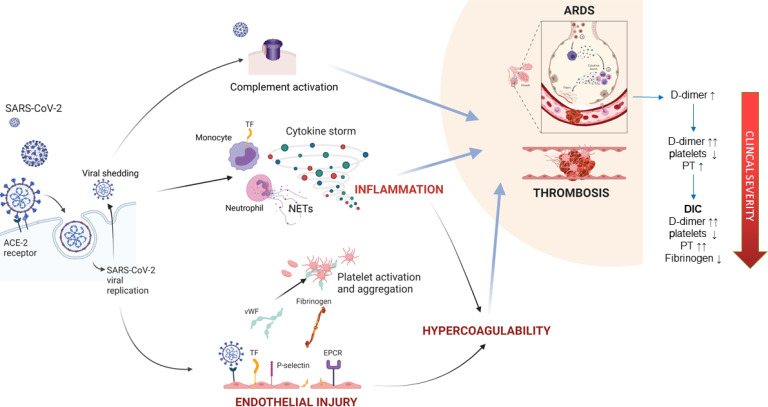Figure 2.
Pathogenesis of CAC. SARS-CoV-2 binds the angiotensin-converting enzyme 2 receptor on respiratory epithelium and endothelial cells. Viral replication and shedding lead to pneumocyte and endothelial cell apoptosis, triggering an inflammatory response, which in a portion of patients leads to pathogenic cytokine storm. These cytokines and endothelial injury result in procoagulant changes, including the release of VWF and FVIII and the upregulation of TF, P-selectin, and fibrinogen. Anticoagulant proteins such as endothelial protein C receptor, antithrombin, and thrombomodulin are downregulated. Fibrinolytic impairment also contributes to hypercoagulability. Neutrophil activation and the release of neutrophil extracellular traps further stimulate thrombosis, and platelets in COVID-19 may exhibit marked hyperreactivity. SARS-CoV-2 spike proteins may directly amplify complement, and contribute to vascular injury and microthrombosis. The coagulation derangements observed in COVID-19 are a direct result of microthrombosis, which is initially localized to the lungs, causing elevations in D-dimer and fibrinogen. As the disease progresses, more systemic inflammation and the activation of coagulation lead to thrombocytopenia and prolongation of clotting times. In some patients this may progress to a frank consumptive coagulopathy.

